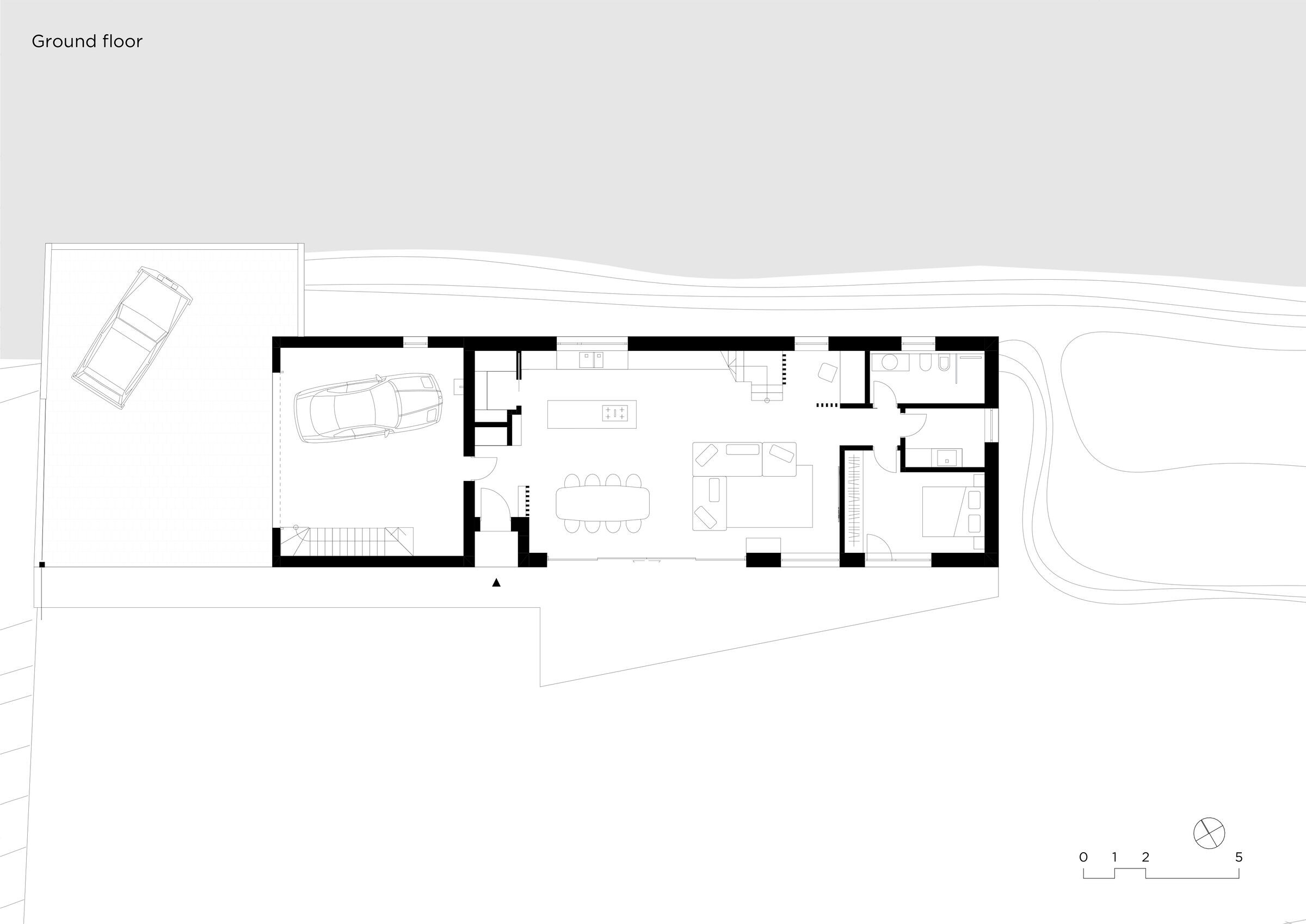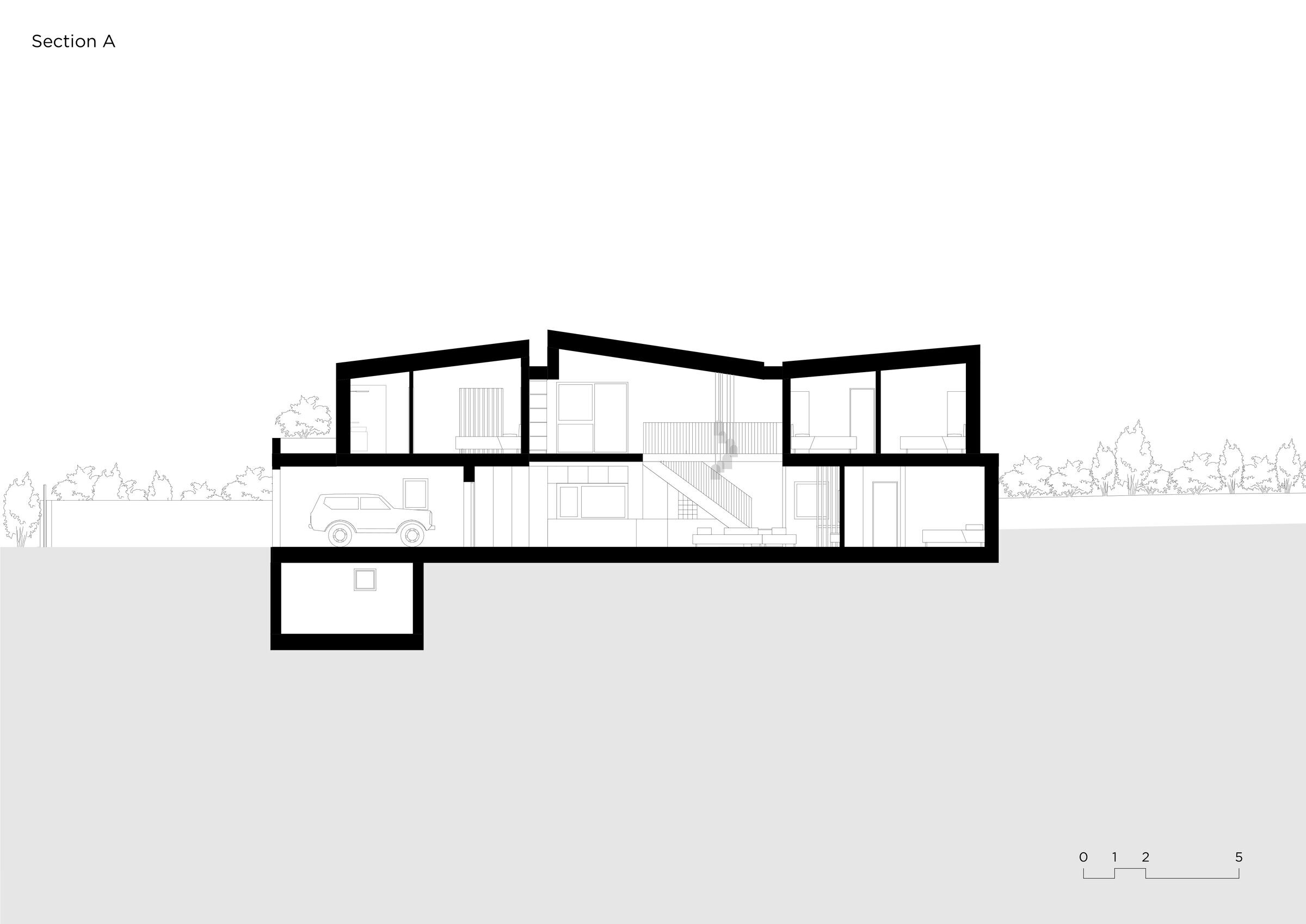A synthesis of light and nature
In the tranquility of the Trentino mountains, far from the noise of the city, architect Andrea Dal Negro designs for his parents a home that embodies the dream of a couple who, after a city life, decided to embark on a new chapter of life just steps away from the forest. With four loyal four-legged friends and a lush garden, the new house celebrates the simple life and an unbreakable connection with the surrounding environment.


Between light and mountains
The architecture was conceived to embrace the mountain landscape and faces the majestic Dolomites of Brenta. Large glass windows dominate the façade, allowing ample daylight to flow into the interior spaces. Orientations, materials, construction techniques, and technological systems are geared toward a concept of sustainability, aiming to minimize environmental impact and harness natural resources. The fundamental concept is the vision of life dynamics as a unified entity, where daytime, nighttime, and working spaces blend and coexist in both spacious, well-lit areas and intimate, private spaces, engaging directly with nature and emphasizing natural lighting and ventilation.

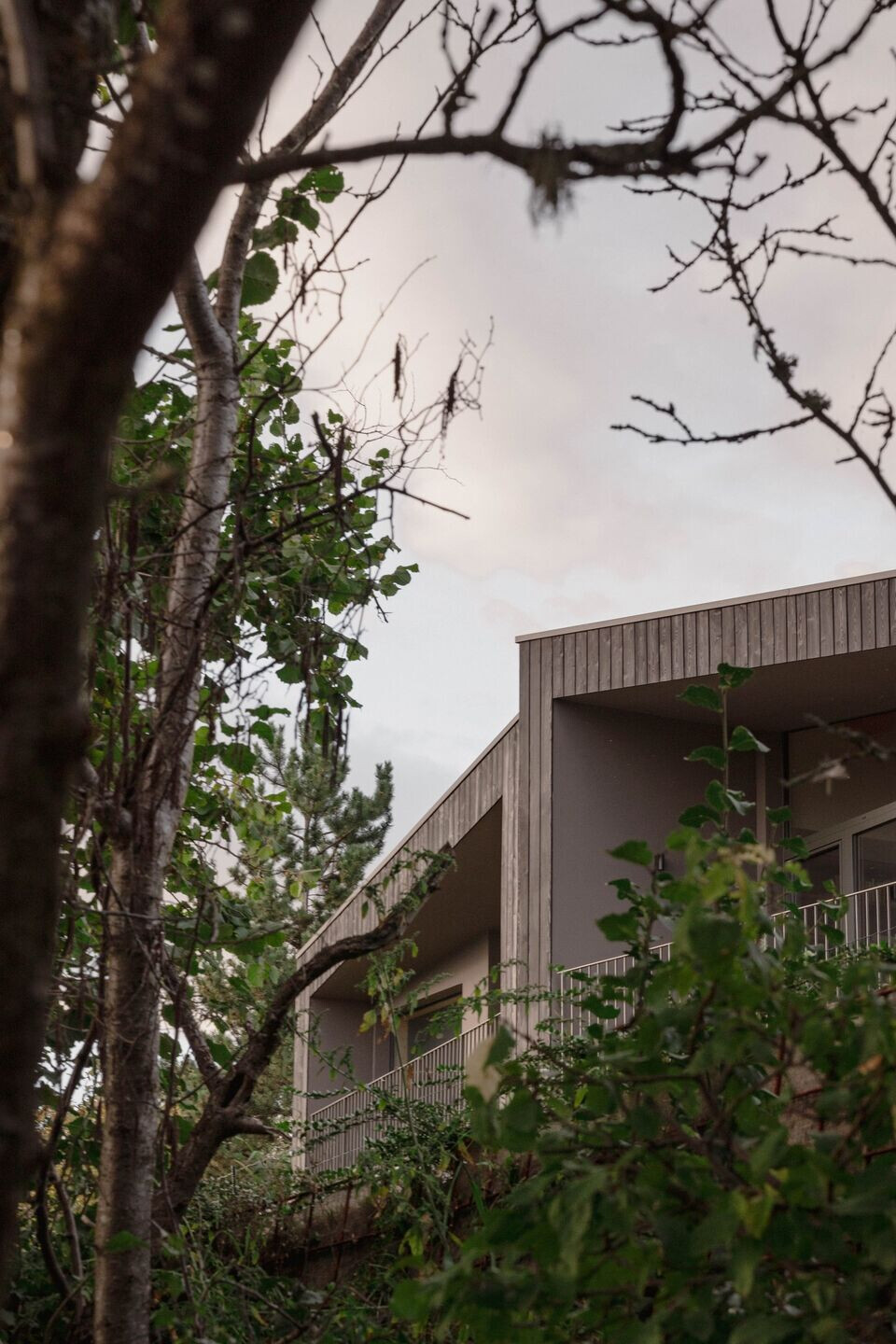
Solitary architecture
The building rises at 1000 meters above sea level on the slopes of Mount Roen in Trentino and is located within a rectangular plot, elongated and south-west-facing, providing optimal sun exposure and panoramic valley views.
The building comprises two above-ground levels and one underground technical floor. Following the traditional typology of the surrounding houses, the ground floor appears as a simple, plastered rectangular volume serving as a basement, while the upper volume is divided into three smaller volumes, fragmenting the architecture and aligning with proportions more in harmony with the surrounding buildings. These three volumes provide rhythm to the building by varying both roof and façade inclinations, enlivening the regular structure of the plan. Their inclinations occasionally overlap with the silhouette of the nearby mountain peaks' ridgeline, altering the architectural perception throughout the day, accentuated by light and shadows, which emphasize and sometimes blur the lines, making the dialogue between the built and natural environment ever-changing, almost in flux. These volumes are complemented by extensive sloping glass loggias, which play a significant role in the building's natural thermal regulation: during the cold winter months, they act as natural radiators, capturing sunlight's warmth and gently diffusing it into the interior spaces; in summer, they shield the interior spaces from intense sunlight, maintaining a comfortable temperature and allowing enjoyment of the mountain's coolness. The glass also facilitates the permeation of nature inside the building, offering views to the outside from various points within the house, maintaining constant visual contact with the natural surroundings. A spacious front garden completes the lot, along with a woodshed and a garden designed to provide a varied diet of natural products.
"Architectural volumes are strongly perceived from within, directing views toward the panorama and projecting light into the warm-toned interior spaces, creating a constant dialogue between nature and architecture." - Andrea Dal Negro
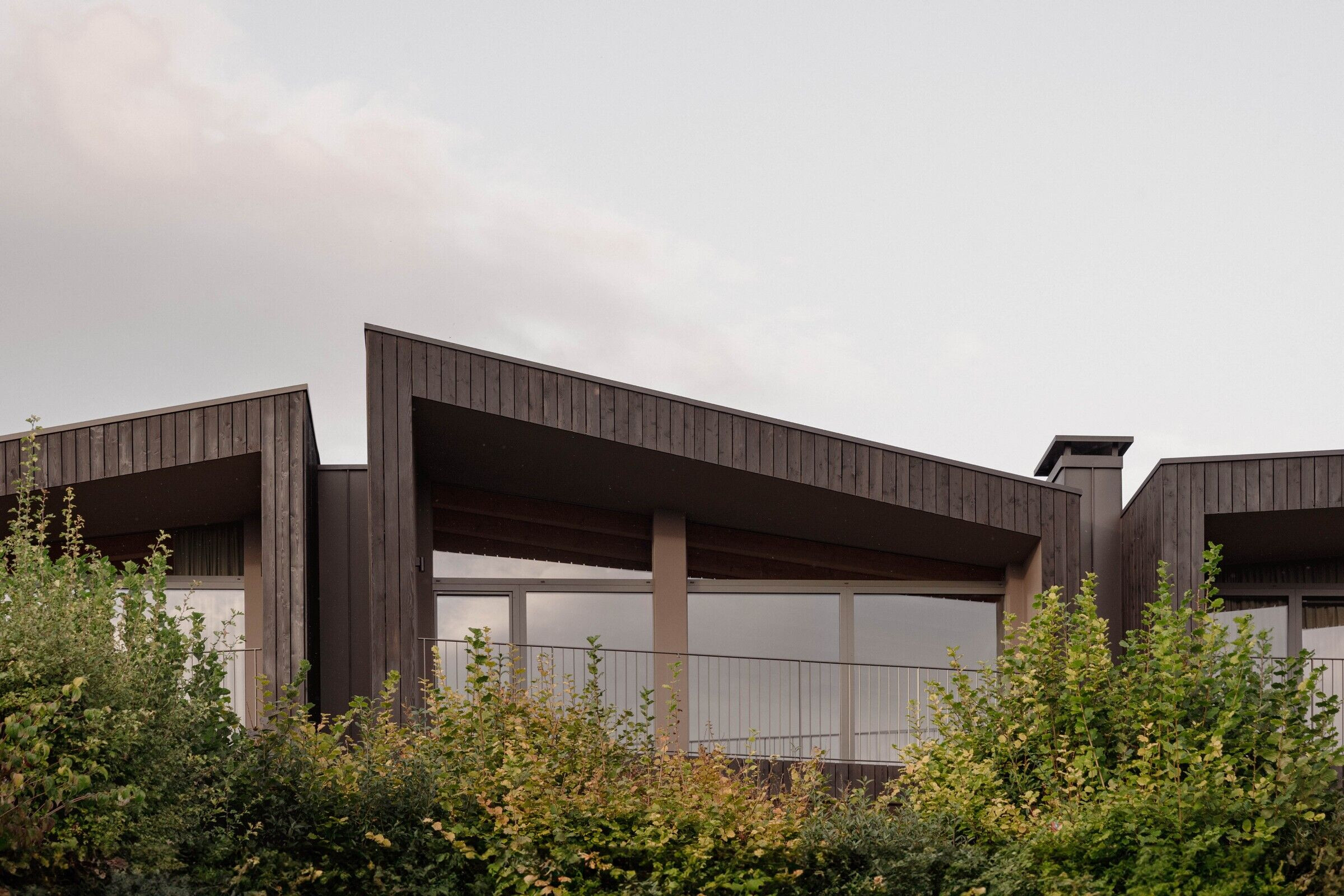

A shared environment
The heart of the house was designed as a single, spacious, and luminous environment. The ground floor features an extensive double-height living area in the central volume, dominated by a fireplace around which the living room, kitchen with a natural stone island, and a study revolve. A sofa bridges the gap between the living room and the kitchen, with comfortable movable cushions replacing the conventional fixed backrest, serving as a unifying element between the dining area and the living room, enhancing sociability with guests.
A large, openable window to the garden allows nature to interact with the interior surface, creating a fluid space in which the boundaries between the building and nature dissolve, further emphasized by the joint resin floor extending to the outdoor terrace. The remainder of the ground floor is completed by a bedroom with a bathroom and a laundry room, as well as a two-car garage. From here, a staircase leads to the basement, used as a cellar and technical room.
The second floor, accessible via a open stair, is divided into three areas reflecting the three architectural volumes, internally lined with exposed wooden beam roofs. The central double-height volume consists of a library and a study that directly overlooks the ground floor living area, visually connecting and spatially uniting the two floors, facilitating the entry of natural light. This solution promotes socialization and the sharing of daily activities, in line with the clients' lifestyle, from evenings reading by the fireplace to culinary preparations and work sessions, all bathed in natural light flowing through the windows.
"Casa Credai is more than a simple dwelling; it's a refuge that embodies the inhabitants' love for the outdoors and their harmonious connection with nature. A place where the love for the mountains, the company of animals, and healthy eating merge into a single life experience. An oasis of peace and beauty where one can find their balance and live in harmony with the natural world around them." - The clients


Intimacy and comfort
Through the library, the sleeping area is reached via a suspended bridge, giving the sensation of floating above the living area. The bedrooms are designed to provide privacy and tranquility. Located in the two lateral volumes, they are separated from each other and are perceived as individual wooden cottages that overlook the garden and the surrounding landscape. These spaces offer an isolated place for rest and reflection, surrounded by greenery and the relaxing sounds of nature, completed by a panoramic sauna, whose view is directed by one of the loggias, acting like a telescope toward the spectacular Dolomites of Brenta.
Like the architecture, the interiors have also been designed and drawn by architect Dal Negro: from the choice of tiles and fabrics to the design of all the furnishings in the house, using oak wood for both furniture and flooring, as well as doors and windows.
“In the interior design I wanted to translate my parents' philosophy and lifestyle into a sober but welcoming, warm, natural space that they could immediately call home." – Andrea Dal Negro

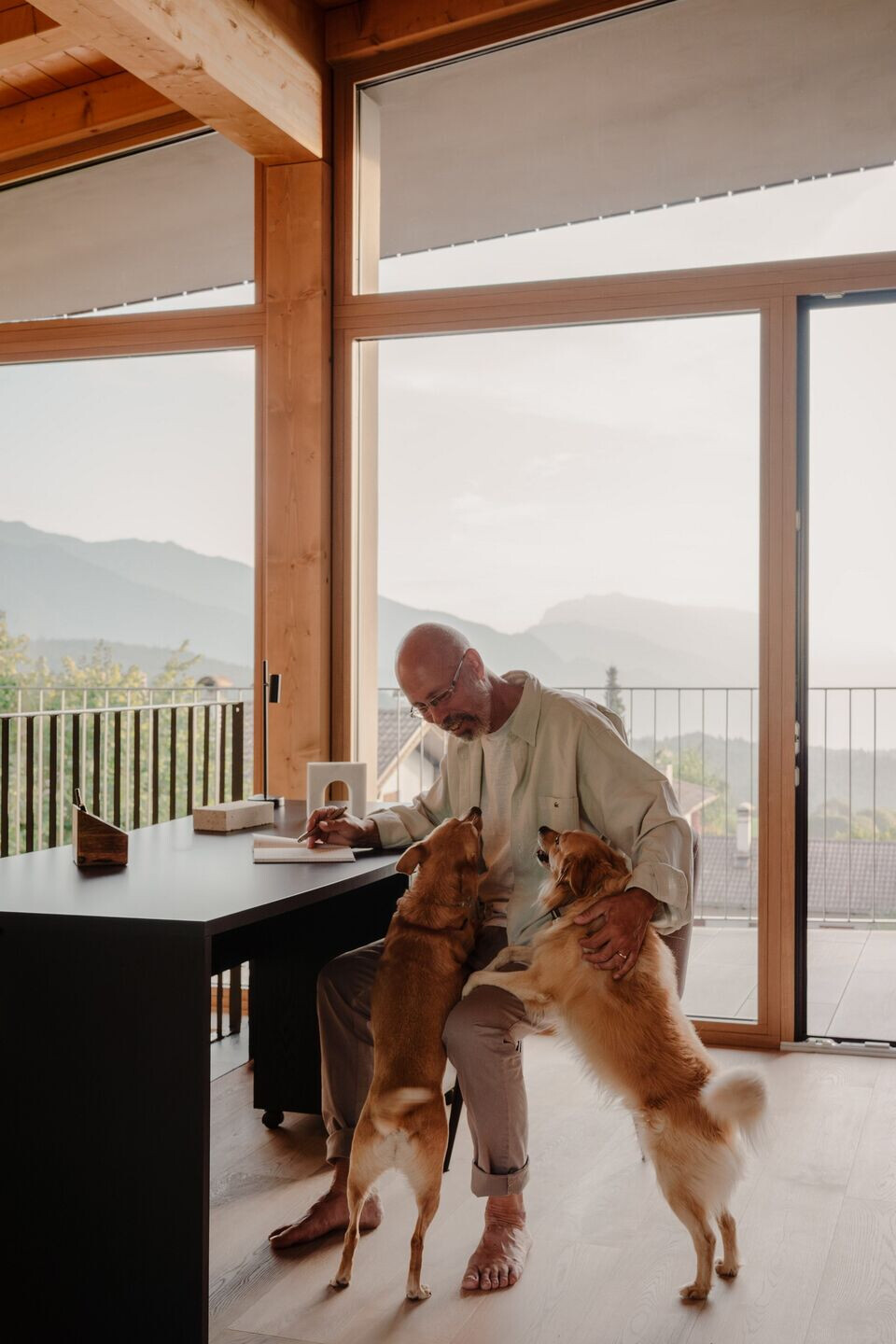
Materials from tradition
To maintain continuity and harmony with the existing context, three prevailing architectural elements used in the surrounding traditional buildings are incorporated: plaster, wood, and pitched roofs. The building's structure is made of prefabricated laminated wood elements, with the ground floor covered by a veiled plaster, while the upper volumes are clad in a ventilated façade of vertical larch wood slats, treated to protect and darken the wood.
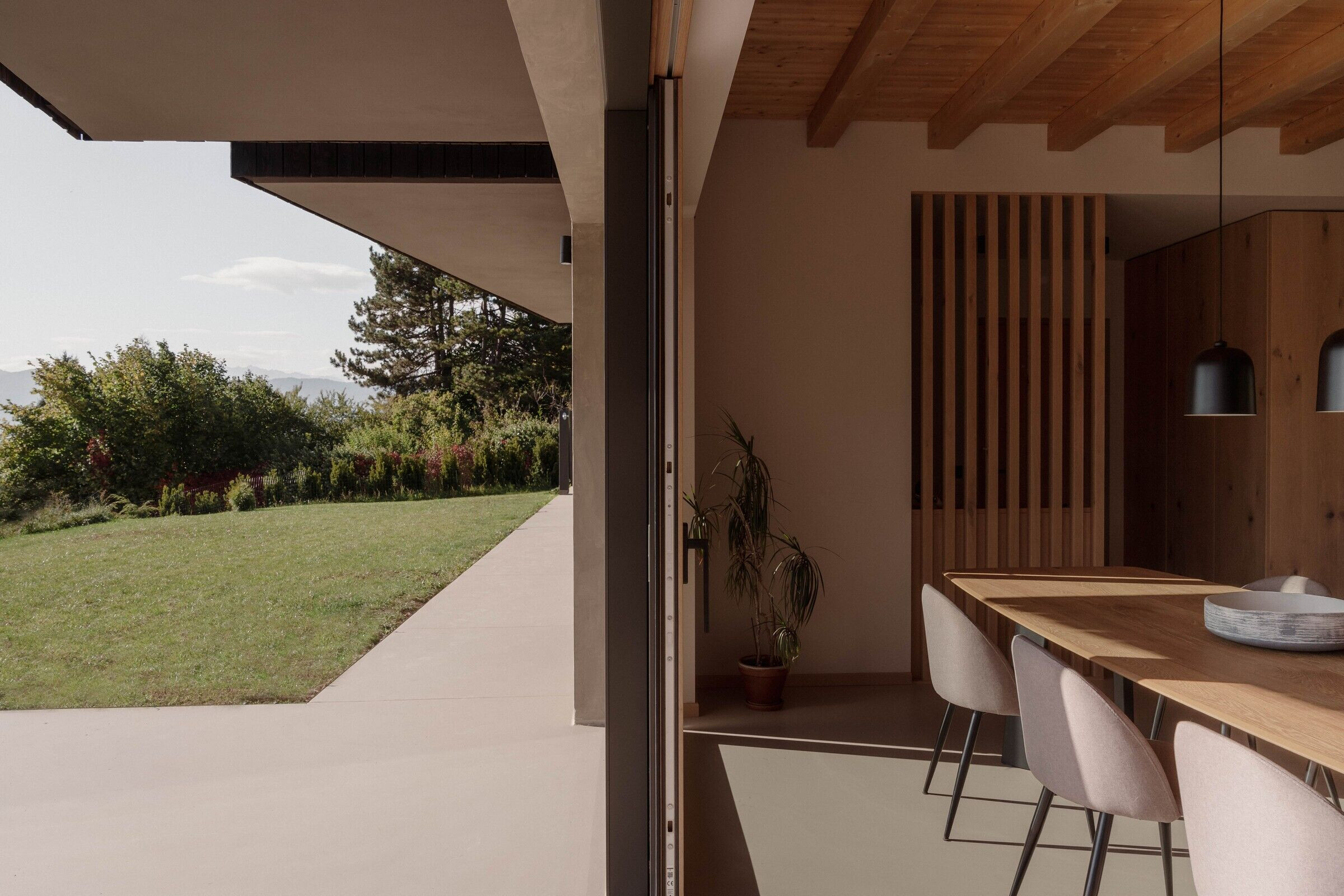
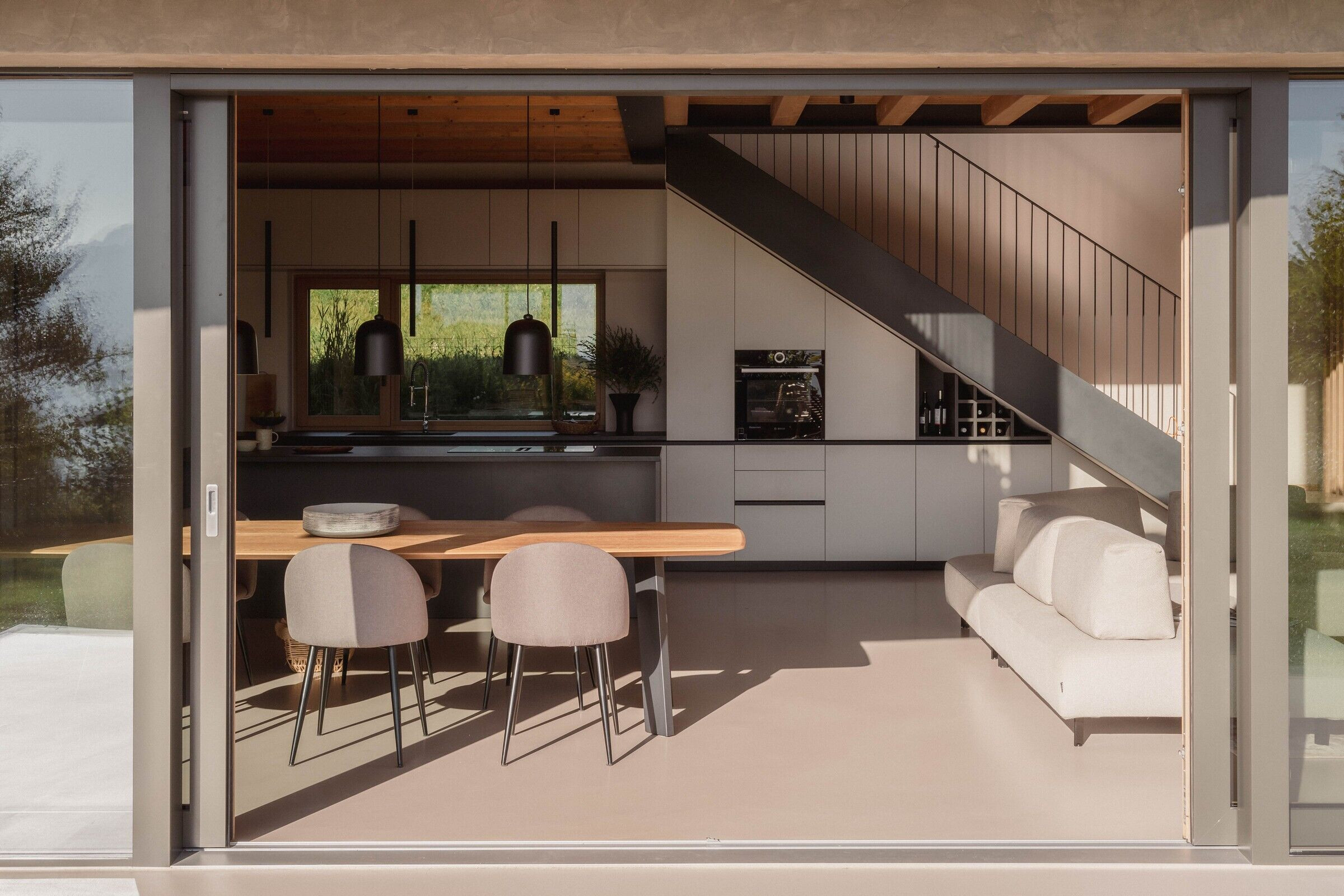
The sun as a source of energy
The building is constructed to A+ energy class standards, aiming to minimize heat loss. The entire structure is heated by an advanced technology air-water heat pump. This solution not only avoids combustion through boilers and the resulting carbon dioxide emissions but also operates silently by harnessing natural resources and converting them into clean thermal energy. A 6 kW photovoltaic system integrated into the central roof powers the heat pump and completely meets the energy needs of the house, making it energy-independent.
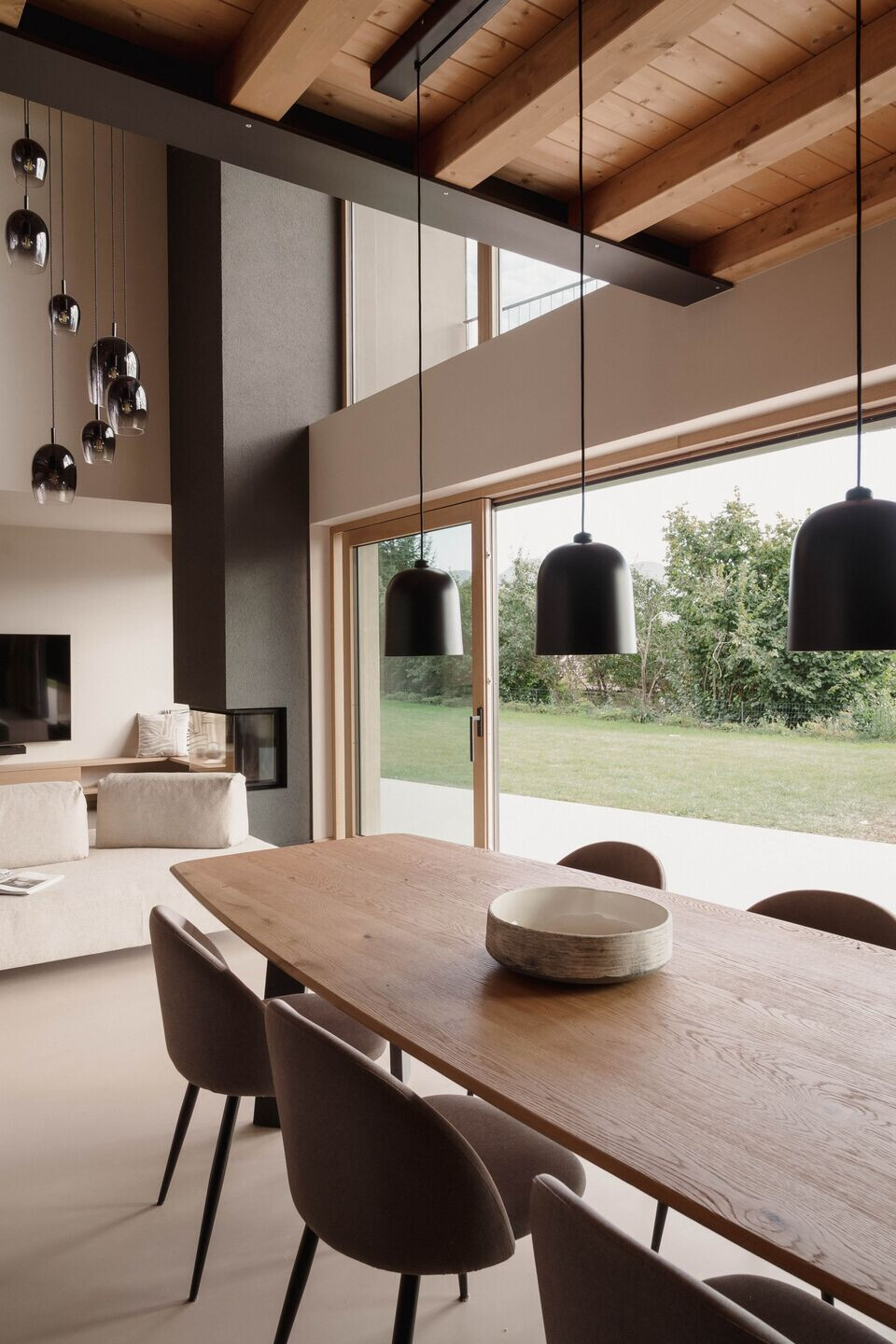

Team:
Architecture and Interior Design: Andrea Dal Negro
Photography: Giulia Maretti
Stylist: Olivia Giorgi

